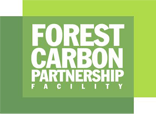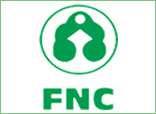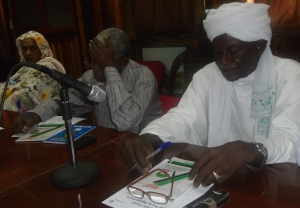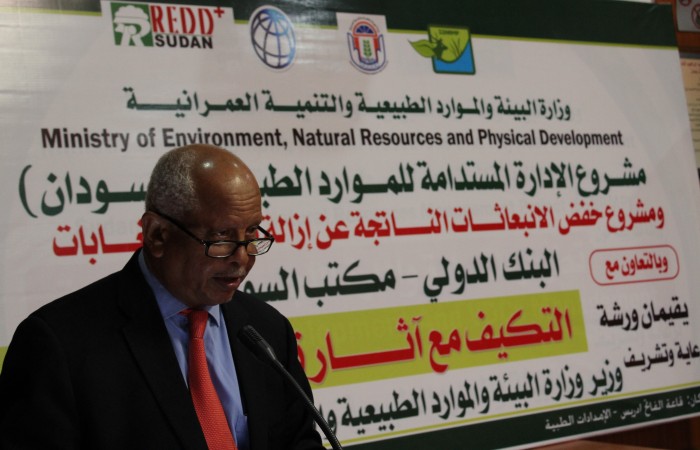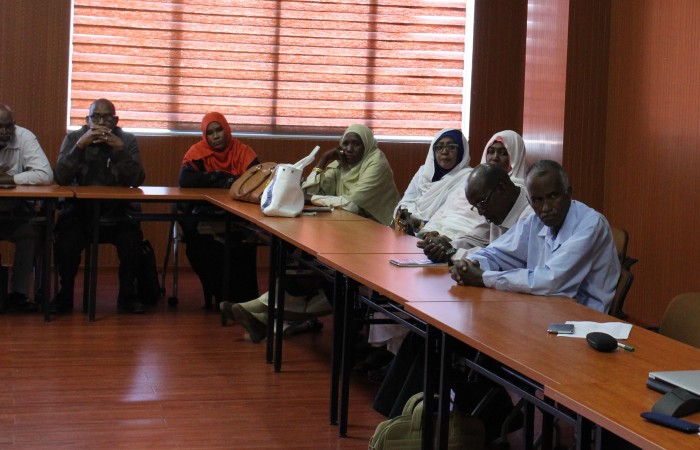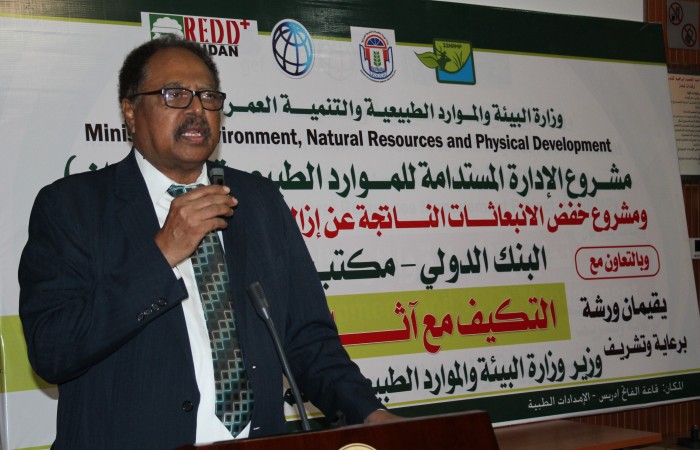Super User
About REDD+ Sudan
Reducing Emission from Deforestation and Forest Degradation; (REDD+) is a global mechanism to mitigate the climate change caused by forest loss or degradation, while mobilizing financial resources for socio-economic development in forest countries.
The Forest Carbon Partnership Facility (FCPF) supports selected countries in the preparation and subsequent implementation of their national REDD+ strategies.
The objective of the project is aiming to achieve REDD+ Readiness by end of 2017, the main activities of Sudan R-PP is;
- support the management arrangement, information sharing, stakeholders consultation and participation.
- Preparation of the REDD+ strategy including social and environmental assessment.
- Some aspect of national forest monitoring
Component 1: Organize and Consult
1 (a) National Readiness Management Arrangements On receipt of go ahead and directives from his peers, the Director General, Forests National Corporation of Sudan went about to instil and institutionalize the REDD+ Process in the country. He appointed a Coordinator, established a Coordination Office and summoned a REDD National Steering Committee followed by two Task Forces. The latter formulated a REDD Strategy and a Readiness Preparation Proposal.
Once accepted by Forest Carbon Partnership Facility, Sudan R-PP shall then be handled by Sudan National REDD+ Programme Implementation Body. Based on the country’s experience in conflict resolution from the forest reservation process, a comprehensive Grievance Management & Conflict Resolution Plan is presented. For these activities a budget of US$250 k is scheduled over the next 4 years.
1 (b) Information Sharing and Early Dialogue with Key Stakeholder Groups A consultation process was carried out since August 2009 through meetings, workshops, group discussion, seminars, so as to capture the views and opinions of all stakeholders in order to ensure that these views and comments reflect the priorities of people involved in the REDD+ process. Communication briefings were circulated by the PMU via media, internet and direct contact.
Links were established to have a continuous feedback from local level through FNC offices, key persons and local NGOs and CBOs. Generic feedback received was analysed and considered centrally. To further improve and enrich information gathered through the national consultation, target groups at local level were also asked to provide views on issues that they would wish to highlight as being potentially challenging on the basis of discussions being held with local stakeholders. Feedback from different stakeholders was received directly during workshops, meeting, seminars and group discussion. Outcome reports were sent to all relevant stakeholders for comments and further revision of reports was made and final versions developed where all views were reflected.
A total of more than 500 responses were received from target groups, local people, environmental organizations, NGOs, CBOs of related sectors, etc. Following the initial launch of the consultation, access to the consultation information was fully considered. This work culminated in the development of Sudan’s First Draft REDD+ Preparedness Strategy. The entire consultation process, including persons met and aspects touched upon is documented in the Annex. Further work is already underway to ensure that all relevant institutions and people have an opportunity to be heard and their views considered through work with the PMU. For these activities a budget of US$115 k is scheduled over the next 4 years.
1 (c) Consultation and Participation Process Subsequent consultation process will include visits to Blue Nile, River Nile, Northern, N. Kordofan, W. Kordofan, N. Darfur, East Darfur and South Darfur States; where relevant agriculture, forests & range custodians and stakeholders are to be met together with a wide array of NGOs & CBOs, particularly Farmers Union and Pastoralists Union, Women Groups, Owners of Community Forests, Institutional & Private Forests. As a centerpiece of the Sudan REDD+ strategy a Consultation and Participation Plan has been formulated. For these activities a budget of US$180k is scheduled over the next 4 years.
Component 2: Prepare the REDD+ Strategy
2 (a) Assessment of Land Use, Land Use Change Drivers, Forest Law, Policy and Governance Sudan is a mostly arid country, dominated by the agricultural sector which includes cropping, livestock, forestry and fishing, and related processing activities. In 2012 land cover was 13% crops, 14% herbaceous plants, 12% shrubs, 10% trees and 51% without vegetation. The forest and woodlands have decreased at a rate of 598,000 ha/year equivalent to 0.08% during 19902000 and 54,000 ha/year during the period 2000-2010. The biggest direct driver of land use change had been the conversion of natural forests to cropland and pasture. Some 17 million ha have been converted into mechanized & traditional rain fed and irrigated agriculture during the period 1940-2012, but in the last decade conversion rates were much lower.
A major driver of forest degradation is energy consumption: Demand for wood fuel increased in the last two decades due to rapid population growth and shortage in supply of other forms of energy. Fuel wood has to cover about 70 - 81 % of the national energy supply. Other big drivers of forest degradation are grazing of domestic animals in woodlands, with devastating effects on tree seedlings and smaller trees, and fire, frequently used in rural land management.
Sudan’s Forest Policy (1986) defines and recognizes several levels of forest ownership: Federal and State Forests (38.9%), Wildlife Reserves (60.8%), Institutional, Community and Private Forests (0,3%). The Forest Act of 1989 prescribes the allotment and upkeep of 10% and 5% of rain fed and irrigated agricultural land respectively to forests in the form of wood lots and shelter belts. The Comprehensive National Strategy 1992-2002 stipulates the allotment of 25% of the country's land area to forest, rangelands and wildlife reserves. To further address land use drivers and governance a budget of US$1,335 k is scheduled over the next 4 years.
2 (b) REDD+ Strategy Options To address the drivers of deforestation and forest degradation, an integrated set of REDD+ strategy options is proposed, which will be screened and prioritized in an inclusive and participatory consultation process with key stakeholder groups. The options are:
- Substitute unsustainable fuel wood and charcoal with Liquefied Petroleum Gas (LPG)
- Increase the use of sustainable charcoal
- Increase firewood efficiency
- Subsidise renewable energy production and grid infrastructure
- Increase gum Arabic production
- Forest conservation and sustainable forest management
- Reforestation
- Crop intensification and balanced livestock production
For these activities a budget of US$1,450 k is scheduled over the next 4 years.
2 (c) REDD+ Implementation Framework Sudan National REDD+ Programme Implementation Body is envisaged to be broad-based, encompassing beside the Steering Committee representatives of:
- Relevant Federal Line Ministries & Institutions, such as MAI, MEFPP, MFNP, HCENR, and RPGD
- Representatives of relevant State entities, such as State Legislatures, State Ministries of Agriculture & Animal Resources
- Representatives of Federal and State Academia, Research, NGOS & CSOs such as SFS, SECS, FoF, GAPAs, FU, and PU.
The Steering Committee is envisaged to be composed of representatives of UN-REDD+ organizations and other expertise of which the collaborative initiative was built: FAO, UNDP, UNEP & WB together with the NPM. The main role of this working group is to coach and 2014 Sudan R-PP.
facilitate REDD+ activities in Sudan, and to coordinate cooperation throughout the entire REDD+ Programme implementation. The actual REDD+ Implementation Framework may still undergo changes and revisions, once the readiness management arrangements will be better visible, along with the emerging REDD+ strategy. For these framework activities a budget of US$510 k is scheduled over the next 4 years.
2 (d) Social and Environmental Impacts during Readiness Preparation and R EDD+ Implementation A number of possible social and environmental impacts emerged in the course of REDD+ Strategy & R-PP preparation. As stated in component 2b, many technical, legislative and institutional studies, consultations and measures are planned to address such impacts. In compliance with the Common Approach, it is planned to undergo a Strategic Environmental and Social Assessment (SESA) process with its key output, the Environmental and Social Management Framework (ESMF). The following two phased approach will be taken:
- During Preparation of the REDD+ Strategy:
- Addressing legal, institutional, regulatory and capacity gaps to manage environmental and social priorities associated with the drivers of deforestation and forest degradation
- Proposing risk minimizing REDD+ Strategy Options
- During Implementation of the REDD+ Strategy:
- Addressing remaining environmental and social risks and potential impacts of policies, regulations, investments, or projects during the implementation of the R-PP or R-Package (ESMF) Steps, responsible entities, actions and documentation along the National SESA process have been specified together with an estimate which World Bank’s Safeguard policies may apply. For the upcoming activities a budget of US$95 k is scheduled over the next 4 years.
Component 3: Develop a National Forest Reference Emission Level and/or Forest Reference Level
Sudan has not yet established a regular or permanent national forest inventory system. However, numerous surveys and studies have been undertaken to identify forest & range resources and changes in land use and vegetation cover.
The state of forest cover can only be assessed from these incomplete and ad hoc surveys and studies, some global forest resources assessments (FRA 1995-97) and international literature. The GHGs emission scenario of the forest sector has been estimated twice, in 1995 and 2000 for the purpose of preparing the initial and second NCs of Sudan to the UNFCCC. Accordingly, in 2000 the LULUCF sector was a net emission source with 9.3 Tg CO2e, mainly resulting from forest and grassland conversions.
Ninth meeting of The Technical Advisory Committee
was held on 21.12. 2017 at gum Arabic hall in forest national corporation The most important issues discussed is following : 1- Update on Activities(implementation the plan + Studies)
Non-governmental and private sector forum of Reducing Emission from Deforestation and Forest Degradation
The fourth meeting was held on Tuesday 13-12-2017 at Hassan Osman Abdu-Elnour hall in Forest National Cooperation
Exchange visit , Niger
The first observation in this visit is the historic character of the Exchange in terms of connecting the Sudanese and the Niger people. For many centuries, since Islam, Nigeriens have crossed Sudan to reach Mecca, and on return, quite many stayed over in Sudan.
Mission on REDD+ & SSNRMP for additional funding
Mission from World Bank came to Sudan for REDD+ & SSNRMP Projects .the duration of Mission from November, 29 - December, 8, 2017 , The mission Schedule included Visiting the REDD+ project in FNC & Meeting with FNC Director General another meeting with Minister of Agriculture and Forests ,Visiting Federal Ministry of Finance , Visiting
First Meeting of Gum Arabic Platform
Kosti City, white Nile State 7 May 2017 , Main issue The Associations of Gum Arabic producers and their role in The REDD+ Programm
Non-governmental and private sector forum of Reducing Emission from Deforestation and Forest Degradation
The second forum was held on Tuesday 12 September 2017 at Hassan Osman Abdu-Elnour hall in forest national cooperation
Um Rawaba locality workshop
:Focal point of north kordofan State organized workshop in Um Rawaba locality under Implementation the second phase of consultation and Participation plan. The aim of this workshop raise awareness and Identify needs and priorities the workshop held on 8 may 2017 in Um Rawaba .this workshop it attended by the national Coordinator and Technical advisor of REDD+ and the Governmental and non-governmental stakeholders
Training Workshop on Climate Change
17-22 Dec. 2017
This training workshop Organized by the work Bank and in collaboration with REDD+ programme, this workshop lead by Prof. Elfatih Althir . and facilitated by Dr. Mudather Zaroug.
the workshop attended by representatives from REDD+ Focal points from four states, Representatives, from Sudan Sustainable Natural Resources Management Project. Representatives from all line Ministries; Ministry of Minerals, Agriculture &forestry, Wildlife, Range and pasture , Oil and gas and irrigation and electricity, and focal points related to Sustainable Natural Resources Management Project.
REDD+ Programme like to thanks the world bank to organizing this training workshop, and thanks for all support to the government of Sudan. REDD+ extend thanks and Welcome to Dr. Alfatih Altahir in very important event today on climate change training workshop, during 17-21 Dec. 2017, to raise the capacity building of the technical staff from all of above mentioned institutions.
As most of you know that the climate changes is hot issues now a days, and Our planet is warmer now than at any point in the past 650,000 years ago. This warming is caused by a build-up of carbon dioxide and other greenhouse gases in our atmosphere. The gases trap heat by forming a blanket around the Earth – like the glass of a greenhouse. These gases stay in the atmosphere for many years. And as they build up, the planet’s temperature rises. A warmer world leads to a more extreme climate – with more severe droughts, floods and storms
Greenhouse gases build up in the atmosphere mainly due to the burning of fossil fuels – coal, oil and gas – and by cutting down forests. Greenhouse-gas levels have rocketed in the last 100 years
The latest climate change science show through the Intergovernmental Panel on Climate Change (IPCC) releases updates reflected that;
There is over 95% certainty that human influence is the dominant factor in warming since the mid 20th century. Climate change impacts are happening now and are increasing in severity and likelihood – from floods in Asia and Europe to droughts in Africa and hurricanes in the USA.
Climate change is already displacing millions of the world's poorest people. And it's affecting people here in the Sudan also Global action on climate change. Having already hit over 1°C of warming, the best we can aim for now is 1.5°C. This is the aim of the 2015 Paris Agreement, which 160 countries including Sudan have officially signed and committed to meet. There are many actions started in Sudan such as REDD+ with World Bank under the Ministry of Agriculture, SSNRMP under the Ministry of Environment , carbon sequestration project also under the Ministry of Agriculture,
How do we stop dangerous climate change?
Two of the biggest solutions are being far more efficient in how we use energy, and moving from coal, oil and gas to 100% renewable energy as fast as possible.
The good news is that this is starting to happen, and is accelerating fast. Renewable electricity costs have plummeted in the last few years, and the amount of wind and solar power is rocketing, all over the world.
The task is urgent – it is what happens between now and 2030 that overwhelmingly determines whether we can keep to 1.5°C, and save as many lives and livelihoods as possible.
Change needs to happen quickly. But it has to be done in a fair way. Rich countries like the Japan, UK, Norway and etc.. must lead the way, also have a responsibility to help poorer countries adapt to climate change, and cope with.
 English
English العربية
العربية 
